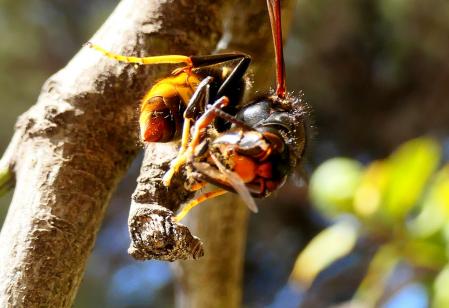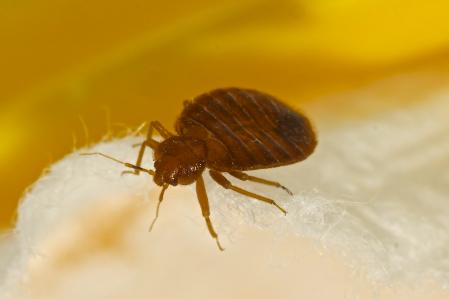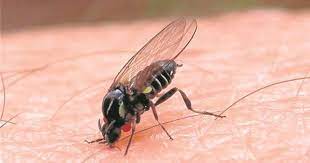Some pests are typically summer visitors, such as mosquitoes or flies, but changes in environmental or climatic conditions, as well as the expansion of some species of invasive insects in the context of globalization, are altering and complicating these sanitary controls. The tiger mosquito, rats and bed bugs are some of the most fearsome pests; but there are more... Environmental health professionals are concerned and ask that we don't lose sight of this as things can get out of control very quickly... These are the 7 summer plagues...
1) Rodents
The presence of rodents has risen between 20% and 25%, according to the Catalan Association of Environmental Health Companies of Catalonia (Adepap). "The rats are now more daring and brazen," says Quim Sendra, its president. It is an effect of having gained ground during confinement. The result is the sensation that many citizens now see them twice as much as before.
The changing habits of rats and the increase in restrictions on the use of some biocidal products, added to the great adaptability of rodents and the resistance that sometimes appears makes it increasingly complex to maintain populations below the established tolerance thresholds.
Companies in the sector ask the Ministry of Health for exceptions to relax the restrictions imposed on the use of insecticides.
Rats have space and more food resources in cities; and if its only predator, man, loosens the controls and treatments, the pests will increase, warns Sendra, who is concerned about the risk that the administration's decision to lower their guard and reduce the budgets and the technical personnel dedicated to this task. Rats are very harmful to environmental health since they are carriers of insects or arthropods that can transmit zoonotic diseases.
2) Tiger mosquito

Precipitation in the spring, as well as high temperatures, have created a breeding ground for mosquitoes, creating ideal habitats for the larval stage.
These conditions favour the increase in adult mosquito populations, which are the ones that cause the main discomfort to people with their bites, as well as with the possible transmission of viruses and diseases.
Climate change means that many species are here all year round according to Quim Sendra, president of Adepap, referring to the tiger mosquito (Aedes albopictus), which has more diurnal activity than common mosquitoes and reproduces with very little water, stagnant in small spaces most of the year.
Professionals recommend preventing them from creating places conducive to laying eggs and the development of the aquatic larval phase (sewers, drains, sinks, pot trays, drums.)
3) Invasive species

Experts are closely following the recent arrival and expansion in Spain of Aedes japonicus, from the East, and Aedes aegypti, originally from Africa. Both species, along with the tiger mosquito, much more present in our country, are vectors of viruses such as dengue, chikungunya and zika, and there have been cases in humans in Spain.
By the end of summer, it is also expected that there will be an increase in the cases of Asian wasp hives ( Vespa velutina ssp. Nigrithorax ), a predator that attacks the honey bee, with a great capacity for adaptation, and which grows year after year in Spain. However, beekeepers from Girona have recently stated that the installation of more traps to capture Asian wasps in May has reduced the presence of this invader. The stings of this wasp cause intense pain, followed by itching similar to that of a burn.
4) Bed Bugs

The increase of bed bugs comes with tourism. "They travel with the tourists. They don't walk, they don't fly, but they travel through our luggage”, says president of Adepap. Bed bugs ( Cimex lectularius ) arrive at homes in most cases transported in their own clothes or travel bags. The pests of this insect are quite difficult to eliminate, since "during the day they hide in corners, cracks in the wood or folds of clothing, especially in mattresses and sofas, and come out at night to suck blood," says Sendra .
5) Cockroaches
Companies also predict the appearance of cockroach infestations (sewer, brown, oriental, black, and brown, common in homes and restaurants). Adepap emphasizes that to combat pests it is always better to have professionals, since "some misused domestic insecticides can become a problem for people's health, they are not always effective and end up having a high economic cost".
6) Black fly
 Black fly (Simuliidae) plagues are located mainly in spaces such as rivers and streams, and often affect municipalities with abundant water flows. Before it was limited to areas such as the Ebro River; but in recent years it has spread to many riverbeds. The black fly bite is very annoying and painful; it can cause severe itching and even edema and requires treatment with antihistamines and antibiotics, in case of infection.
Black fly (Simuliidae) plagues are located mainly in spaces such as rivers and streams, and often affect municipalities with abundant water flows. Before it was limited to areas such as the Ebro River; but in recent years it has spread to many riverbeds. The black fly bite is very annoying and painful; it can cause severe itching and even edema and requires treatment with antihistamines and antibiotics, in case of infection.
7) Fruit fly

Professionals see it as necessary to exercise extreme vigilance over Drosophila melanogaster, controlling both the food industry and domestic kitchens, since they can carry pathogenic microorganisms, such as Salmonella and Escherichia coli bacteria, attached to the villi of the body and legs, and contaminate in this way food and surfaces on which they perch.
Stay alert and vigilant!